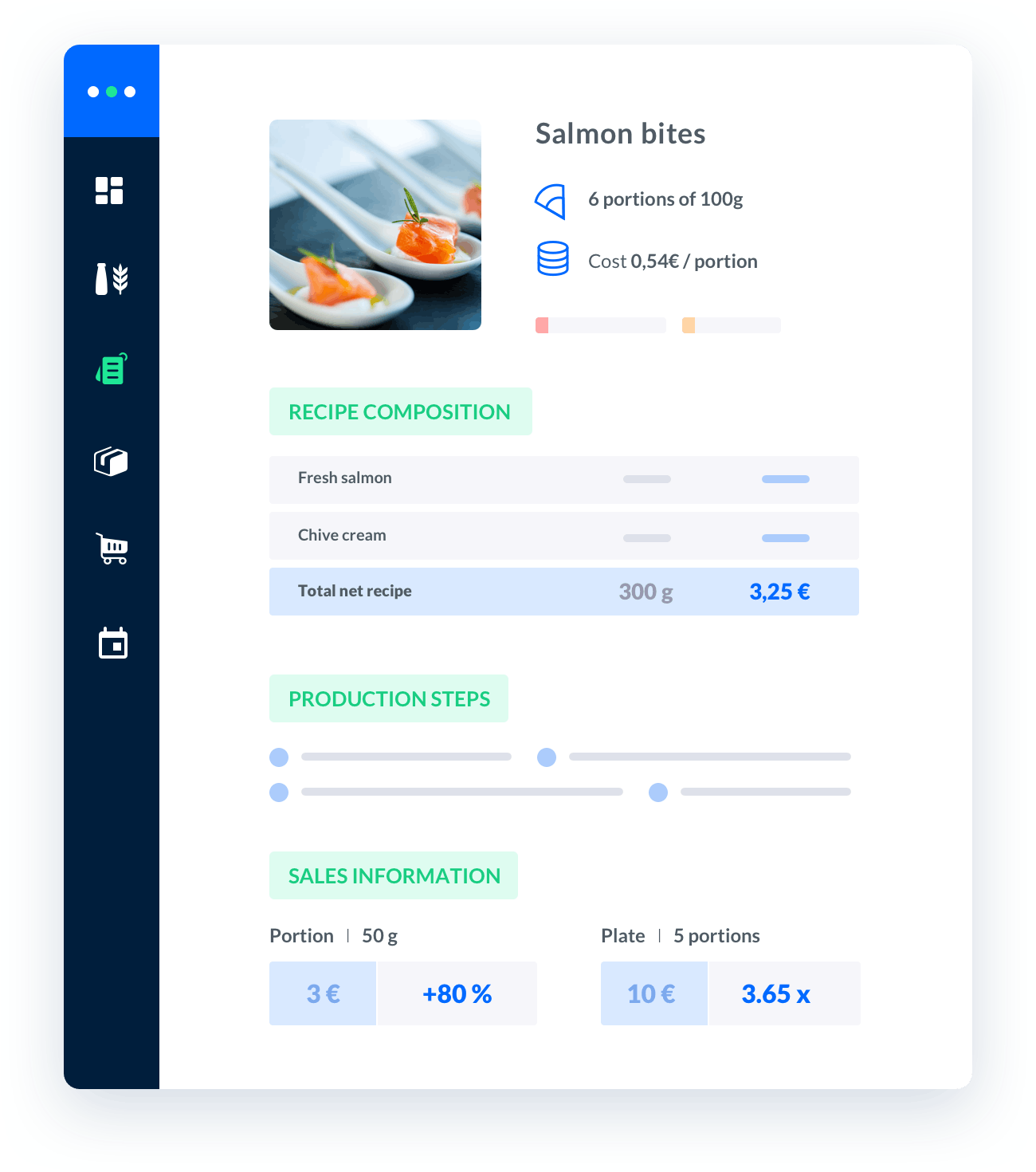food yield calculator
When it comes to the culinary world, precision and accuracy are crucial in ensuring the success of any recipe or menu.One important aspect that professional chefs and caterers need to consider is the food yield.

Melba: the food cost app to optimize the profitability of your restaurant
Discover how to optimize the profitability of your restaurant with melba

The ultimate guide to food cost restaurant
Learn more about the food cost basis and how to reduce your food cost percentage
When it comes to the culinary world, precision and accuracy are crucial in ensuring the success of any recipe or menu. One important aspect that professional chefs and caterers need to consider is the food yield. Calculating the food yield accurately not only helps in planning the quantity of ingredients required but also assists in cost control and waste reduction. In this comprehensive guide, we will delve into the concept of a food yield calculator, its significance, and how it can benefit professionals in the catering industry.
The Significance of a Food Yield Calculator
A food yield calculator is a valuable tool that allows culinary professionals to determine the expected yield or portion size of a particular recipe or ingredient. By inputting the necessary information, such as the starting weight or quantity of the ingredient and the cooking or processing method, chefs can obtain an estimated yield, which helps in planning the overall quantity required. This information is particularly useful for large-scale events, such as banquets or weddings, where precise calculations are necessary to ensure an adequate supply of food without excessive waste or shortages.
Benefits of Using a Food Yield Calculator
Using a food yield calculator offers several advantages to professionals in the catering industry. Some of these benefits include:
- Accurate Planning: By knowing the expected yield of a recipe or ingredient, chefs can accurately plan the quantity of ingredients required, ensuring they have enough to meet the demand.
- Cost Control: With precise calculations, professionals can minimize ingredient wastage, leading to cost savings for the business.
- Consistency: A food yield calculator helps maintain consistency in portion sizes across different servings or dishes, ensuring a uniform dining experience for guests.
- Recipe Scaling: When scaling up or down a recipe for a different number of servings, a food yield calculator provides the necessary information to adjust ingredient quantities accordingly.
- Waste Reduction: By accurately calculating the yield, chefs can avoid excess food waste, contributing to a more sustainable and environmentally friendly operation.
How to Use a Food Yield Calculator
Using a food yield calculator is a straightforward process that involves a few key steps:
Step 1: Gather the Required Information
Before using a food yield calculator, you need to gather the necessary information, including:
- The starting weight or quantity of the ingredient
- The cooking or processing method (e.g., boiling, baking, grilling)
- Any additional factors that may affect the yield (e.g., trimming, peeling, removing bones)
Having these details ready will ensure accurate calculations.
Step 2: Choose a Food Yield Calculator
There are various food yield calculators available online, each with its own features and functionalities. Choose one that suits your specific needs and preferences.
Step 3: Input the Information
Once you have selected a food yield calculator, input the gathered information into the calculator's fields. Ensure that you enter the details accurately to obtain precise results.
Step 4: Obtain the Results
After entering the necessary information, the food yield calculator will generate the estimated yield or portion size based on the provided inputs. Take note of these results for planning and recipe adjustments.
Best Practices for Food Yield Calculations
1. Be Specific with Ingredients
When using a food yield calculator, it is crucial to be specific with the ingredients you are calculating. Different variations of the same ingredient may yield different results due to variations in water content, fat content, or other factors. For instance, specifying whether you are using a lean cut of meat or a marbled cut can significantly impact the final yield.
2. Consider Cooking Loss
During the cooking process, some ingredients may experience shrinkage or loss of moisture, resulting in a reduced yield. It is essential to take this into account when using a food yield calculator. Consider the cooking loss percentage based on the specific cooking method and adjust the inputs accordingly.
3. Account for Trimming and Waste
Trimming, peeling, and removing bones or inedible parts are common practices in culinary preparations. When calculating food yield, make sure to account for any waste that occurs during these processes. Including the waste percentage in your calculations will help you obtain a more accurate estimate of the usable yield.
Conclusion
A food yield calculator is a valuable tool for professionals in the catering industry. By accurately calculating the expected yield or portion size of a recipe or ingredient, chefs can plan their quantities, control costs, maintain consistency, and reduce waste. When using a food yield calculator, it is essential to gather the necessary information, be specific with ingredients, consider cooking loss, and account for any trimming or waste. By following these best practices, culinary professionals can optimize their operations and deliver exceptional dining experiences.






